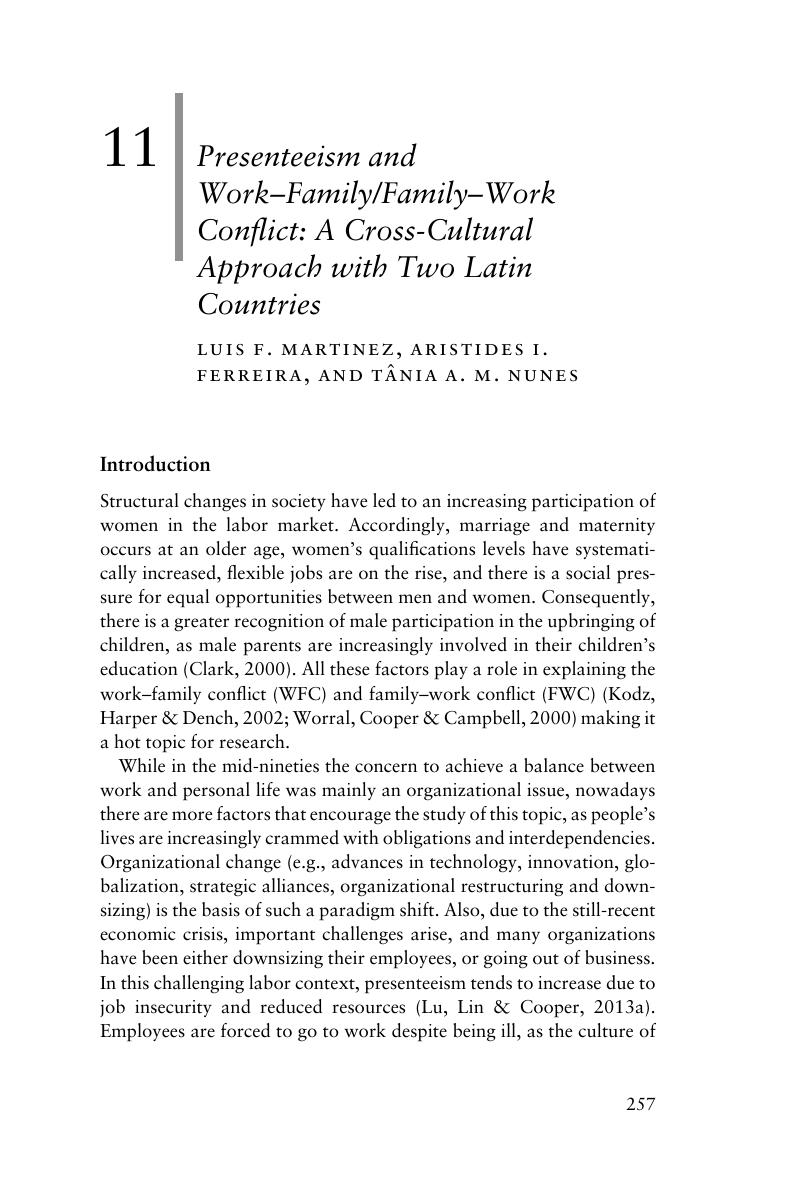Book contents
- Presenteeism at Work
- Cambridge Companions to Management
- Presenteeism at Work
- Copyright page
- Contents
- Contributors
- Foreword
- Introduction
- Part I Situating Presenteeism on the Global Stage
- Part II Understanding the Behavior of Presenteeism
- Part III Understanding the Consequences of Presenteeism
- Part IV Understanding Presenteeism in a Cross-Cultural Context
- 11 Presenteeism and Work–Family/Family–Work Conflict: A Cross-Cultural Approach with Two Latin Countries
- 12 Presenteeism in the Chinese Work Context
- Index
- References
11 - Presenteeism and Work–Family/Family–Work Conflict: A Cross-Cultural Approach with Two Latin Countries
from Part IV - Understanding Presenteeism in a Cross-Cultural Context
Published online by Cambridge University Press: 09 August 2018
- Presenteeism at Work
- Cambridge Companions to Management
- Presenteeism at Work
- Copyright page
- Contents
- Contributors
- Foreword
- Introduction
- Part I Situating Presenteeism on the Global Stage
- Part II Understanding the Behavior of Presenteeism
- Part III Understanding the Consequences of Presenteeism
- Part IV Understanding Presenteeism in a Cross-Cultural Context
- 11 Presenteeism and Work–Family/Family–Work Conflict: A Cross-Cultural Approach with Two Latin Countries
- 12 Presenteeism in the Chinese Work Context
- Index
- References
Summary

- Type
- Chapter
- Information
- Presenteeism at Work , pp. 257 - 285Publisher: Cambridge University PressPrint publication year: 2018
References
- 6
- Cited by



